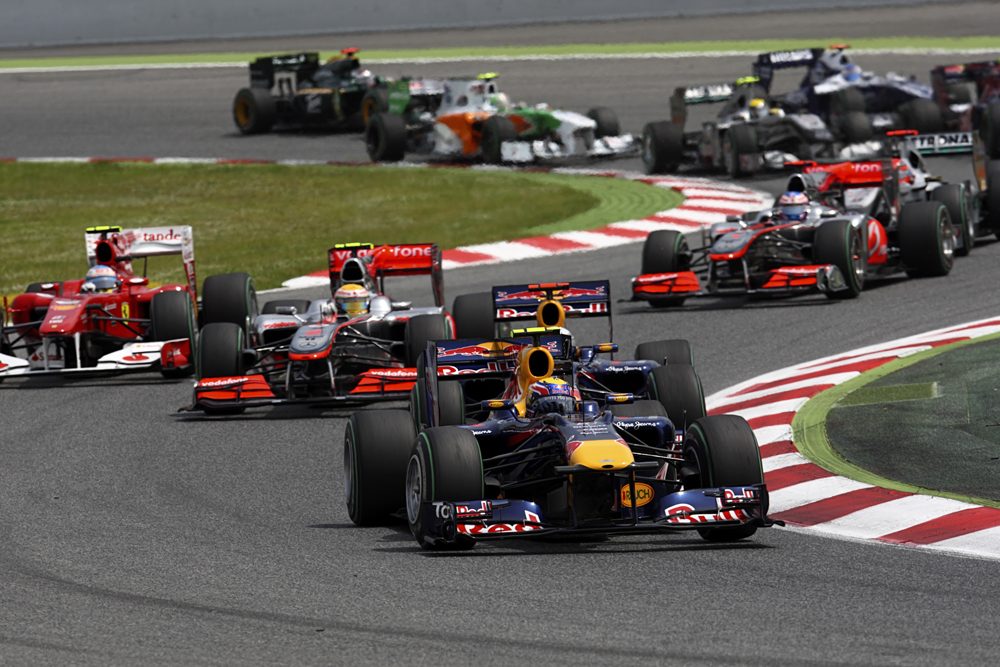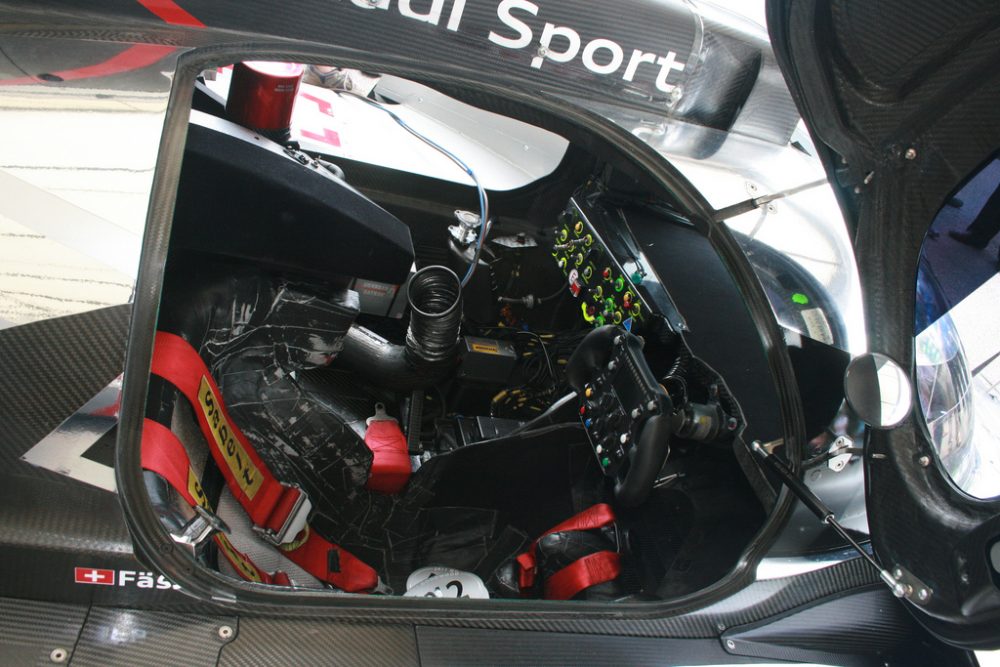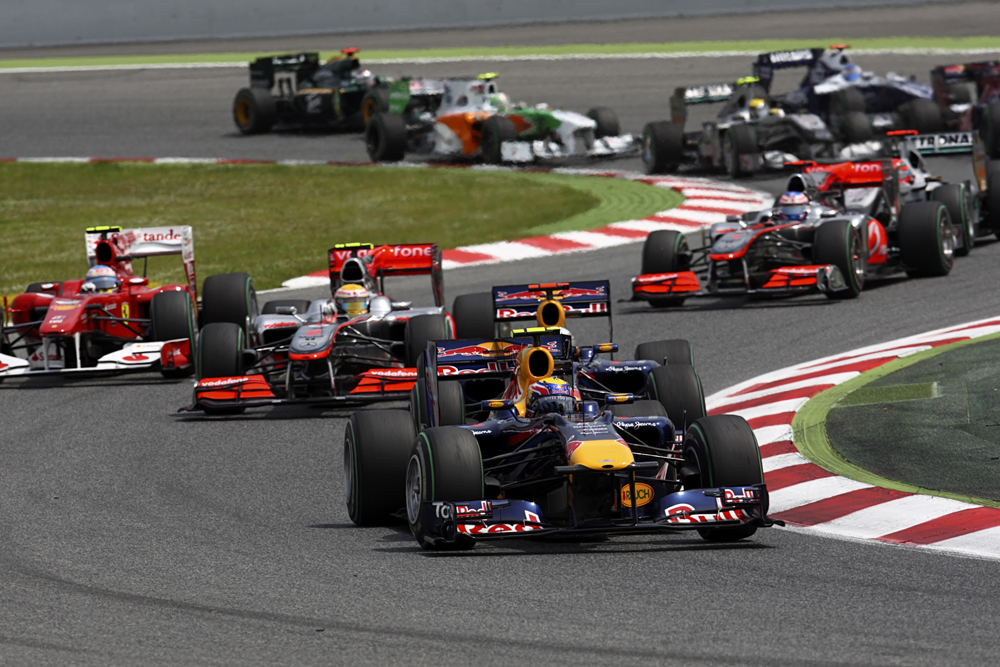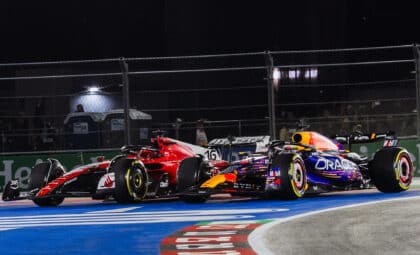
Photo: LG via CC
“There are only three sports: bullfighting, motor racing, and mountaineering; all the rest are merely games.” – Ernest Hemingway
Most racing fans know at least one person in their group of friends or family who believes auto racing isn’t a “real” sport. To them, something can only be considered a sport if it involves physical effort, and ideally no small amount of it; which is why they might also conclude that archery, shooting, and—god forbid—soccer are also not real sports, never mind the fact that all three of these will be played at the Olympics this summer.
Related: What’s the difference between Formula 1 and IndyCar racing?
Usually, the problem is that they compare the physical demands of auto racing to their own experience driving to the supermarket in a regular road car, which indeed requires no physical exertion whatsoever; but these two things have about as much in common as fishing by the lakeside and wrestling a crocodile in the Nile River.
I was appalled to find that 43% of people on Debate.org believe auto racing isn’t a sport, most of whom explain that it can’t be because “all they do is sit in a seat and don’t freaking move.” In other words, they believe athleticism requires movement, and thus that racing drivers are not athletes and that what they do can’t be a sport. Then you have people like Donovan McNabb, who flat-out claimed on TV that six-time Sprint Cup champion Jimmie Johnson wasn’t an athlete because “he sits in a car and he drives … what athletically is he doing?”
Unfortunately, people like McNabb are not very well-informed. There are many reasons something can be a sport without involving athleticism, but I’m not even going to get into that here—because anyone who knows anything about auto racing understands that a great deal of physical effort (and risk) is definitely involved, even if drivers “only” turn a steering wheel and push pedals.
There’s a reason Ernest Hemingway valued motor racing as one of the most extreme sports on the planet, and I’ll be exploring why it should still be viewed as such today. I’ll mostly use Formula 1 as a reference, but the reasons I give below should still apply to other forms of motorsports to varying degrees. So let’s get to it.

Photo: Ian McWilliams via CC
If you think sitting in a race car is a cozy job, think again. As part of the engineers’ efforts to strip as much weight from race cars as possible and to keep only the necessary parts, they feature few creature comforts. The seat’s only job is to ensure drivers don’t get tossed around in corners, and there’s no air conditioning, which they would surely wish for at races like the Malaysian Grand Prix, where humidity goes up to 80% and temperatures regularly exceed 104°F / 40°C.
Spending any amount of time in these conditions while wearing five-layer fireproof race overalls is not a happy time, and these guys do it for up to two hours or more depending on the racing series. It can be even worse for drivers racing in closed-cockpit cars, inside of which temperatures frequently surpass 120°F / 49°C.
That heat causes more than mere discomfort, as the average F1 driver sweats up to 8.8 lb / 4 kg of his body weight throughout a Grand Prix. Studies have shown losing that much body weight can cause a significant drop in reaction times and mental focus, which is one of the reasons drivers drink up to 2 gallons / 7.6 liters of water before hot races. But compared to the rest of the ordeal of auto racing, that’s the easy part.
While driving around town, your heart rate probably doesn’t go up very much, if at all. And why would it? Short of getting into a collision or being new to driving, there’s little reason to get stressed behind the wheel. Yet an F1 driver’s heart rate averages around 170 beats per minute (BPM) throughout a race and regularly peaks at upward of 190 BPM, which approaches the maximum a human being can achieve without beginning to experience severe heart problems. We’ll explore why this happens when we get to g-forces, but for now let’s just look at what it means for the driver.
To maintain an average heart rate of 170 BPM over the course of a Grand Prix, F1 drivers must be extremely fit. They adhere to a very strict diet and exercise regime, as well as undergo intense cardiovascular training. As a result, they have a resting heart rate of around 40 BPM, down from 70 BPM for the average person. Just because they’re sitting down doesn’t mean they aren’t getting a workout. In fact, the cardio exercise of racing at a Grand Prix is akin to running a marathon.
The video above shows you what that sounds like. Yet some people would have you believe it’s as easy as taking a stroll through the park…

Photo: Mario30095 via CC
So let’s get to the meat of this: why do F1 drivers sweat so much and have such elevated heart rates during a race if all they do is sit in a car and turn a steering wheel? The answer is g-forces. Just because drivers don’t actively move in the traditional way that we expect athletes to move doesn’t mean they aren’t exercising. Perhaps what people like McNabb don’t understand is that unlike in most sports, F1 drivers don’t transfer their energy into something else, such as a ball, but rather resist the energy and stress that g-forces put on their bodies.
This is mostly due to the sheer acceleration, braking, and cornering performance of Formula 1 cars, but it’s hard to truly grasp this, or even the performance of less capable racing cars, without having experienced it oneself. However, comparing them to regular road cars can offer some perspective.
Most road cars can only generate about 0.8 g of force at the most. Even some supercars struggle to achieve 1 g in corners, and achieving this would require taking corners at speeds that would almost surely make your passenger accuse you of being a maniac. On the other hand, a Formula 1 car regularly produces 4 or 5 g in Grand Prix corners, which essentially makes everything feel 4-5 times heavier to the driver.
For example, the combined weight of a driver’s head and his helmet is around 16 lb / 7.25 kg—but at 5 g, that’s a whopping 80 lb / 36.3 kg of force being applied to the driver’s neck alone, which he must endure corner after corner, lap after lap, while keeping a clear head. Thanks to banked turns, even NASCARs are capable of taking corners at tremendous speeds, such as over 220 mph / 334 kph at Turn 1 of the Indy 500. When going through a corner like that, a driver who weighs 200 lb / 91 kg will feel like 1,000 lb / 454 kg. Not exactly a pleasant sensation.
Furthermore, it’s not uncommon to generate up to or even more than 5 g while braking in a Formula 1 car. In fact, while a regular car needs about 4 seconds to come to a complete stop from only 30 mph / 48 kph, an F1 car can go from 124 mph / 200 kph to a stop in just 2.9 seconds. Think about that next time you slam your brakes in the car and feel your whole body uncomfortably lurching forward.
Take a look at the onboard video below of Michael Schumacher‘s lap around the Suzuka Circuit in Japan. These kinds of forces can make it difficult to think and even breathe for untrained individuals (and they are one of the reasons drivers get so snappy at their engineers when they are radioed during corners). They are also why a driver’s heart rate rises as high as it does, and why F1 drivers have such absurdly strong necks.
If you could put Average Joe in a Formula 1 car as a passenger, he would become sick, dizzy, and probably pass out within a few laps.
Let’s talk about that Hemingway quote for a moment. In a way, I shouldn’t be using it at all because the mentality behind it is exactly what leads people to say silly things like “X isn’t a real sport.” But it does highlight that for many years, auto racing was one of the riskiest sports in the world. Most Formula 1 drivers used to get in their car believing there was a 1-in-3 chance they wouldn’t survive to the finish line, and in fact 37 died between the 50s and 90s. Though auto racing is much safer today, accidents still happen, and death remains a very real possibility.
In most sports, a lapse in judgement, a brief loss of mental focus, or a simple mistake rarely carries a great deal of weight. At the worst, an athlete will miss out on scoring a goal, or perhaps in rare circumstances even cause themselves or their team to lose a tournament. In auto racing, a lapse in focus spanning just a fraction of a second can lead to a potentially career-ending crash. At 186 mph / 300 kph, the room for error is extraordinarily narrow and the penalty for making a mistake can be extreme. It is vital for F1 drivers to be in peak physical condition so that they can focus on the driving rather than on merely withstanding the g-forces and heat.
A small mistake caused Fernando Alonso to fly into the wall at the 2016 Australian Grand Prix. He sustained over 46 g.
Driving a Formula 1 car exerts enormous stress on the driver, who must not only withstand the forces applied to his body but also maintain a clear head to actually race. It’s not enough to be able to merely survive the ordeal; drivers also need the reflexes to avoid crashing at speeds most would consider suicidal, all the while thinking about racing lines, overtaking strategies, and more.
Next time a friend suggests racing drivers aren’t athletes or that auto racing isn’t a “real” sport, invite them to go karting with you. When they complain about being sore the next day, point out to them that the workout was insignificant compared to auto racing. Who knows, they might change their mind.

Kurt Verlin was born in France and lives in the United States. Throughout his life he was always told French was the language of romance, but it was English he fell in love with. He likes cats, music, cars, 30 Rock, Formula 1, and pretending to be a race car driver in simulators; but most of all, he just likes to write about it all. See more articles by Kurt.









